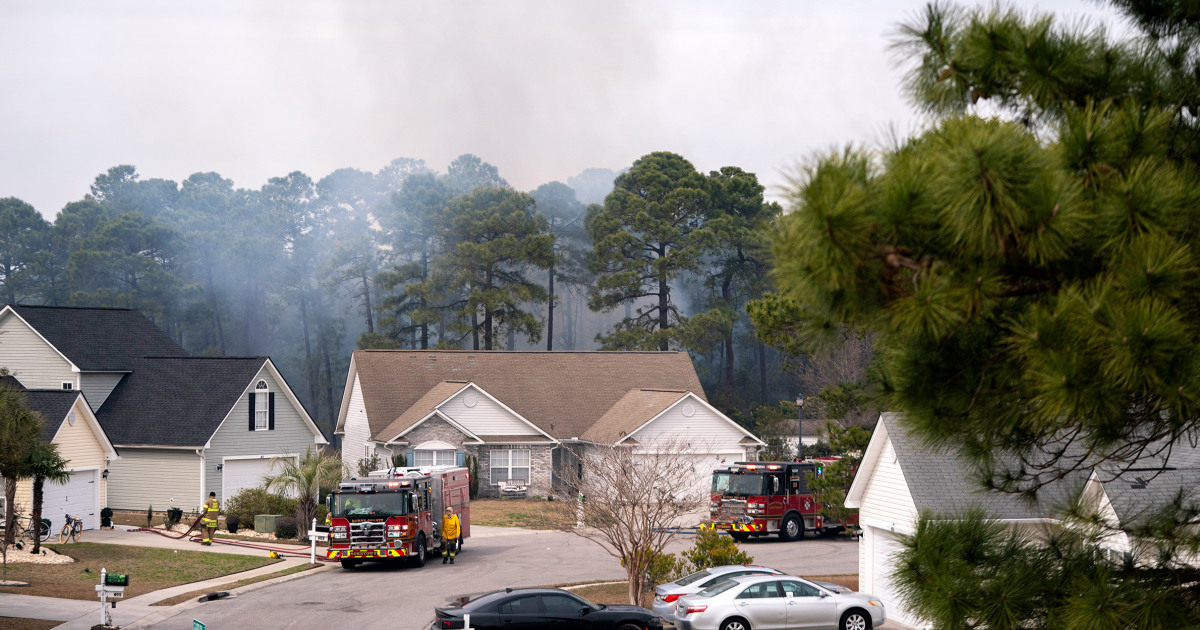U.S. Tariffs and South Carolina Wildfires: A Dual Crisis Unfolds
As the U.S. government recently announced new tariffs, the state of South Carolina finds itself grappling with another pressing issue: devastating wildfires. This morning rundown delves into the implications of these simultaneous crises on the economy and the environment. With the interplay of economic pressures from tariffs and the environmental toll from wildfires, the effects ripple through communities, industries, and the natural landscape alike.
Understanding the Impact of U.S. Tariffs
The newly imposed tariffs by the U.S. government are a part of a broader strategy to protect domestic industries and address trade imbalances. While intended to bolster the economy, these tariffs can create a chain reaction of consequences that affect various sectors.
- Increased Costs for Consumers: Tariffs typically lead to higher prices for imported goods, which can trickle down to consumers. Items ranging from electronics to everyday household products may become more expensive, squeezing household budgets.
- Impact on Businesses: Companies that rely on imported materials for production may face increased costs, leading to potential layoffs or reduced investment in growth. Small businesses, in particular, may struggle to absorb these costs.
- Trade Relations: New tariffs can strain relationships with trading partners, which may retaliate with their own tariffs, impacting U.S. exports and further complicating the economic landscape.
The economic environment shaped by these tariffs can create uncertainty, affecting business decisions and consumer confidence. As companies navigate these challenges, the potential for economic slowdown looms, particularly in regions heavily reliant on trade and manufacturing.
The Wildfires in South Carolina: A Growing Concern
While tariffs present a significant economic challenge, South Carolina is simultaneously battling rampant wildfires that threaten both lives and livelihoods. The state’s unique geography and climate make it susceptible to wildfires, especially during dry seasons when conditions are ripe for ignition.
Recent years have seen an uptick in wildfire incidents, fueled by climate change and human activity. The consequences of these wildfires extend beyond immediate destruction:
- Environmental Degradation: Wildfires release significant amounts of carbon dioxide and other pollutants into the atmosphere, contributing to air quality issues and climate change.
- Loss of Biodiversity: Ecosystems are severely impacted as wildlife habitats are destroyed, leading to a decline in native species and disrupting the ecological balance.
- Economic Impact: The agricultural sector suffers from wildfires, as crops and farmland are destroyed, impacting food supply and local economies dependent on agriculture.
The Interplay Between Tariffs and Wildfires
The confluence of U.S. tariffs and South Carolina wildfires presents a unique set of challenges. The economic strain from tariffs may limit the state’s ability to respond effectively to natural disasters. Budget constraints could hinder firefighting efforts and recovery initiatives, particularly in rural areas where resources are already stretched thin.
Moreover, the agricultural sector, already reeling from the effects of wildfires, faces additional pressure from increased costs due to tariffs. Farmers may find it increasingly difficult to afford the necessary equipment and supplies to rebuild after a wildfire, further exacerbating the crisis.
Strategies for Mitigation and Recovery
As South Carolina navigates these dual crises, proactive strategies and community engagement become essential. Here are some approaches that can help mitigate the impact of both tariffs and wildfires:
- Investment in Fire Prevention: The state can allocate more resources toward fire prevention measures, such as controlled burns and better land management practices, to reduce the risk of wildfires.
- Community Preparedness: Educating communities about wildfire risks and encouraging preparedness can help save lives and property. Programs that promote fire-resistant landscaping and emergency plans can be invaluable.
- Support for Affected Industries: Providing financial assistance and resources to farmers and businesses affected by wildfires can help them recover and adapt to the economic strains caused by tariffs.
- Advocacy for Trade Policies: Engaging in advocacy efforts to promote fair trade policies can help alleviate some of the negative impacts of tariffs, ensuring that local businesses can remain competitive.
The Role of Community and Government
Communities play a crucial role in disaster response and recovery. Local governments, non-profits, and community organizations can collaborate to provide support to those affected by wildfires while addressing the economic ramifications of tariffs.
Government initiatives aimed at strengthening disaster response systems can enhance resilience. This includes improving infrastructure, investing in firefighting resources, and ensuring that communities have access to emergency services during crises.
Looking Ahead: Hopes for Recovery and Resilience
While the challenges posed by U.S. tariffs and South Carolina wildfires are formidable, there is room for optimism. Communities have shown resilience in the face of adversity, and with the right strategies in place, recovery is possible.
By fostering a spirit of collaboration and support, South Carolina can navigate these dual crises more effectively. Investing in sustainable practices, both environmentally and economically, will not only aid recovery but also set the stage for a more resilient future.
In conclusion, as the U.S. grapples with the implications of new tariffs and South Carolina confronts the devastating impact of wildfires, the intersection of these crises presents both challenges and opportunities. Through joint efforts, awareness, and strategic planning, it is possible to emerge from this dual crisis stronger and more united.
See more Update My News



